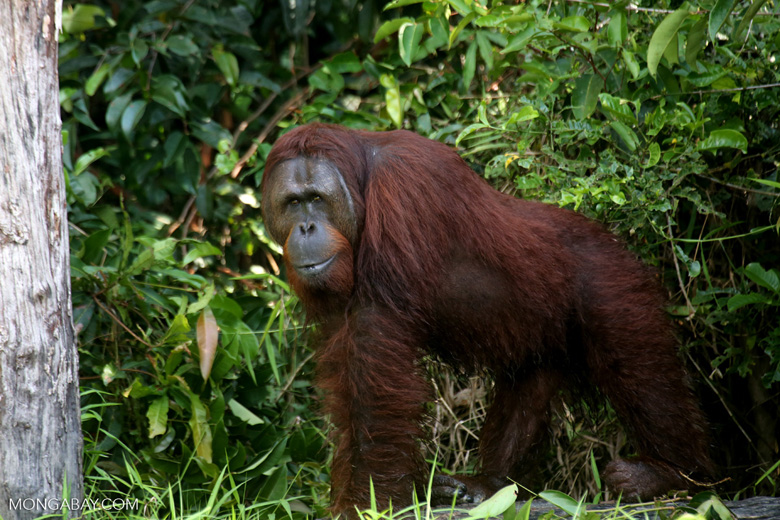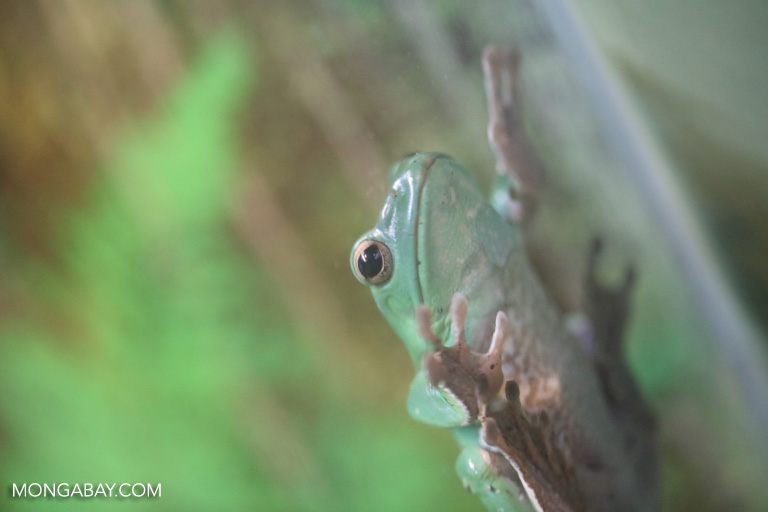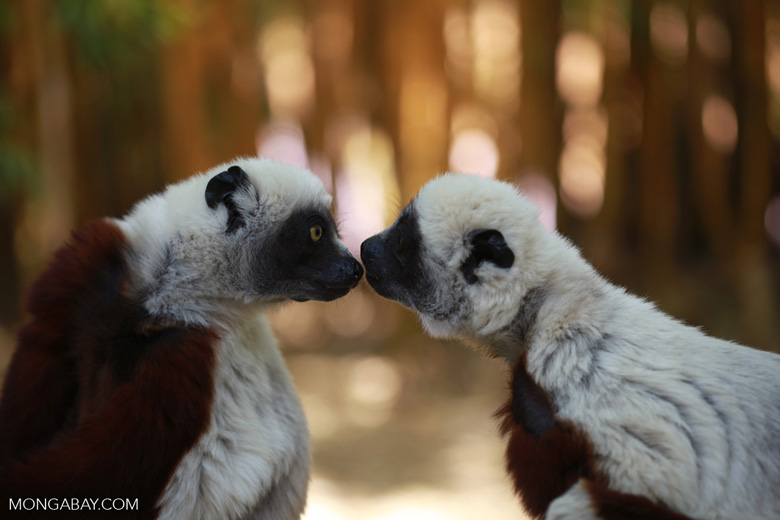- Experts say the Zika virus public health crisis comes with an important message regarding how humans are altering their environment.
- One of 14 new tarantula species recently described by biologists, was named after Johnny Cash for being located near the Folsom Prison and being all black in color.
- A recent study reports that Europe’s shift away from lighter-colored broad-leafed trees to dark green conifers has stoked global warming.
Morocco has flipped the switch on the world’s largest solar power plant [NPR]
This week, Morocco’s king had the privilege of powering up the first phase of the country’s massive solar power project. The power station sits on the edge of the Saharan desert and is expected to reach the size of Rabat, Morocco’s capital city, and provide electricity for 1.1 million people by the time the project is finished in 2018.
Study shows new rainforests outperform old-growth forests in carbon sequestration [BBC News]
A new study shows that newly grown rainforests can absorb more than 10 times as much carbon from the atmosphere as old-growth forests. However, researchers caution that it is still extremely important to protect old-growth forests, as they continue to keep locked away a vast amount of carbon.
Is the Zika virus holding up a mirror to human behavior? [Washington Post]
The Aedes aegypti mosquito, an insect that thrives in “artificially human-made habitats,” is largely responsible for the startling spread of the Zika virus. But experts say this public health crisis comes with an important message – a message that begs us to look at how humans are altering their environment.

Scientists have solved the mystery of the deep-sea ‘purple sock’ [BBC News]
The deep-sea creature called Xenoturbella is so unique that it took researchers 60 years to figure out what it was or where it originated from on the evolutionary family tree. However, the discovery of four new species from the Pacific Ocean has allowed scientists to determine that this animal belongs to the earliest branches of life.
Norway has pledged $50m to fund Indonesia’s peat restoration [Mongabay]
While Indonesia’s president has demonstrated resolve to end practices that contribute to the fires, he must ensure the agency is able to execute its mandate to restore peat by ensuring the legal framework is clear. Norway said it would continue to fund the work of the agency, but that it expects Jokowi to pass new regulations by June establishing the enhanced legal framework for peat protection.
A deadly encounter between orangutans was the first of its kind to be recorded [New Scientist]
Typically female orangutans are solitary animals and rarely engage in fights. Also unusual for the species is a coalition between females and males. But both rare occurrences were witnessed in the swamp forests of Indonesia’s Mawas Reserve during an aggressive encounter that resulted in death for one orangutan.

The movement of this deadly bee virus is manmade [BBC News]
A deadly bee disease has spread worldwide by way of the global trade in bees. The virus together with the Varroa mite is capable of killing off whole hives posing a serious threat to bee populations.
Climate change has pet owners rethinking preventative care [The Globe and Mail]
More often climate change reports cover how wildlife habitats are being affected, but what about the cats and dogs that so many of us consider to be members of our own family? These changes are likely to affect them as well which may mean rethinking preventative care such as using flea and tick repellent or heartworm pills.
New jewel-eyed tree frogs display strange reproductive behavior [Mongabay]
Researchers reported seeing a yellow “yolky” substance inside the bellies of tadpoles belonging to two new tree frog species discovered in Taiwan. The team says this substance suggests some unique reproductive behavior in both species.

This new tarantula’s name may have you singing Folsom Prison Blues [Washington Post]
Aphonopelma johnnycashi is one of 14 new tarantula species that were recently described by biologists. This particular species of black tarantula lives near Folsom, California, the home of the prison that inspired Johnny Cash’s Folsom Prison Blues and where he played a historic series of concerts for inmates in the 1960s.
Changes in the make-up of Europe’s forests are fueling global warming [Japan Times]
The widespread belief that planting more trees helps to slow rising temperatures is facing new evidence that suggests there are conditions that apply to this view. Europe’s shift away from lighter-colored broad-leafed trees to dark green conifers has stoked global warming according to a recent study.
MONGABAY HIGHLIGHTS
Let’s build a conservation movement in the year of the monkey
You’ve heard of “bird-watching,” the hobby, sport or even obsession that occupies the free time of millions of people around the world. You may have even heard of bird life-listing, but chances are you haven’t yet heard about “primate-watching” and “primate life-listing”.
Peru’s tremendous biodiversity is being threatened by a new deforestation hotspot
The lower Las Piedras River, in the far west Amazon rainforests of the Madre de Dios region of southern Peru, is an incredibly biodiverse area — but it’s also the site of an increasing amount of deforestation.

A British helicopter pilot was targeted and killed by elephant poachers
Roger Gower, 37, was flying over Maswa game reserve in Tanzania, tracking down active elephant poachers, when a poacher broke cover and fired upon the helicopter from the ground with an automatic rifle. Officials have arrested five suspects so far.
A previously undiscovered lion population was recently found in Ethiopia
While on an expedition in Alatash National Park, a team from Oxford University’s Wildlife Conservation Research Unit (WildCRU) heard roars of lions, captured some lions on cameras, and recorded multiple lion tracks on dry riverbeds.
From conflict to conservation in 20 years
A deal has been struck between First Nations governments, the provincial government of British Columbia, and the forestry industry. The agreement announced earlier this week will protect the vast majority of Canada’s Great Bear Rainforest, one of the largest old-growth temperate rainforests left in the world.
